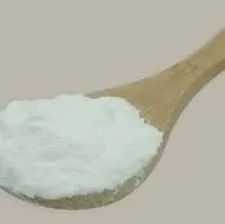Chemicals Used in Wastewater Treatment Plants
Wastewater treatment is a crucial process that aims to reduce the environmental impact of wastewater before it is released back into the environment or reused. This complex process involves numerous physical, biological, and chemical treatments, among which chemicals play a significant role. Understanding the various chemicals used in wastewater treatment plants (WWTPs) helps to appreciate their function, efficiency, and impact on public health and the environment.
1. Coagulants
One of the primary types of chemicals used in wastewater treatment is coagulants. Coagulation is the first step in the treatment process, designed to aggregate suspended particles into larger clumps or flocs for easier removal. Common coagulants include aluminum sulfate (alum), ferric chloride, and polyaluminum chloride. These chemicals destabilize the particles in the water, allowing them to clump together and settle at the bottom of settling tanks. The efficiency of coagulation significantly influences the subsequent processes, such as sedimentation and filtration.
2. Flocculants
Following coagulation, flocculants are employed to enhance the aggregation of particles. Flocculants are typically long-chain polymers that aid in binding the small flocs into larger ones, improving the sedimentation process. Common flocculants used in WWTPs include polyacrylamide and natural-based products. By enhancing floc formation, flocculants help to clarify wastewater and reduce the load on filtering systems, making them essential in creating a more efficient treatment process.
Disinfection is a critical step in ensuring that treated wastewater is safe before it is released or reused. Various disinfecting agents are employed, with chlorine being the most widely used due to its effectiveness in killing bacteria and viruses. However, the use of chlorine must be carefully managed to avoid the formation of harmful by-products, such as trihalomethanes. Alternatives like ozone and ultraviolet (UV) light are also increasingly utilized, especially in facilities aiming for a more sustainable and environmentally friendly approach. Ozone is a powerful oxidant that decomposes quickly, reducing chemical residual concerns, while UV disinfection relies on specific wavelengths of light to inactivate pathogens without the addition of chemicals.
chemicals used in wastewater treatment plants

4. pH Adjusters
The pH level of wastewater must often be adjusted during treatment to enhance the performance of other chemicals and processes. Common pH adjusters include sulfuric acid, sodium hydroxide, and lime. These chemicals help to achieve optimal pH levels for coagulation, disinfection, and biological treatment processes. Maintaining the appropriate pH is crucial for controlling the solubility of certain compounds and ensuring the efficacy of treatment methods.
5. Nutrients
To support biological treatment processes, nutrients such as nitrogen and phosphorus are sometimes added. These nutrients are essential for fostering the growth of microorganisms, which break down organic matter in the wastewater. While many wastewater treatment systems can naturally achieve the right nutrient balance, some facilities add ammonium sulfate or other nutrient sources to optimize microbial activity, particularly in nitrogen removal processes.
6. Defoamers and Odor Control Agents
Defoamers play an important role in minimizing foam formation during the treatment process, particularly in aeration tanks. Excessive foam can interfere with the operation of the treatment plant and reduce efficiency. Common defoaming agents include silicone-based products. Additionally, odor control agents, such as activated carbon or specific chemical compounds, may be used to neutralize unpleasant smells from the treatment process, which can have implications for facility operation and community relations.
7. Conclusion
The use of chemicals in wastewater treatment is a vital element that enhances the efficiency and effectiveness of the treatment process. Each class of chemical serves a specific purpose and plays a crucial role in meeting regulatory standards and protecting public health and the environment. As technology evolves, there is an increasing emphasis on finding more sustainable and environmentally friendly chemical alternatives, helping to minimize potential negative impacts. Understanding these chemicals and their applications is essential for any ongoing efforts to innovate and improve wastewater treatment processes in the face of growing environmental challenges.

